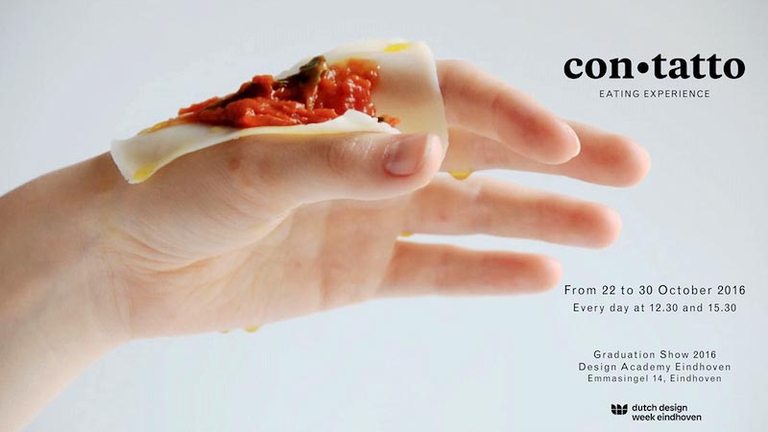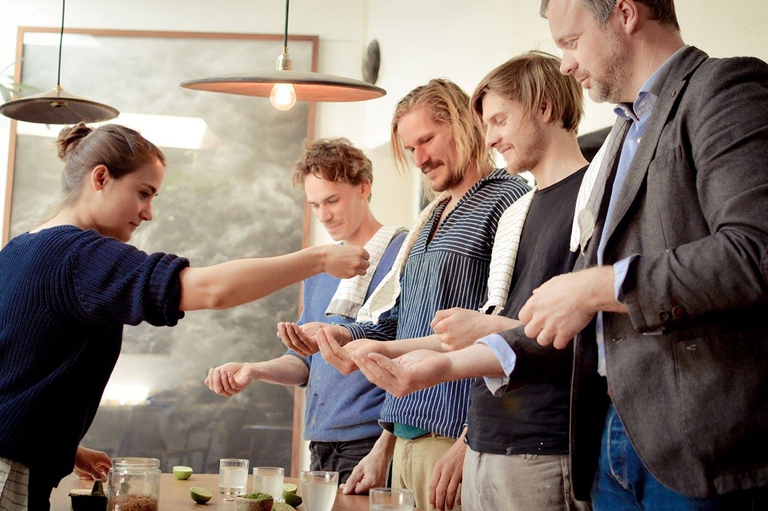
By recovering clothes discarded in the West, Togolese designer Amah Ayiv gives them new life through his high fashion creations.
When it comes to eating, the most profound, elementary impulses and istincts of our soul, as well as of our social constraints, come into play. Throughout the human history, the primordial gesture of eating has taken on new meanings. Besides mere sustenance, eating has become an essential moment for society. It reflects national traditions, regional
When it comes to eating, the most profound, elementary impulses and istincts of our soul, as well as of our social constraints, come into play.
Throughout the human history, the primordial gesture of eating has taken on new meanings. Besides mere sustenance, eating has become an essential moment for society. It reflects national traditions, regional customs, family values and rituals, slowly evolving between tradition and innovation.
Rethinking some of the key elements of this social act is the aim of Italian designer Giulia Soldati. Her final project at the Design Academy Eindhoven’s Social Design Master, in the Netherlands, proposes an innovative, unexpected, sensual, funny yet worthy experience: the Contatto Experience.
“Giulia Soldati gave a performance in which food and body merge in a new way,” writes Thomas Widdershoven, Design Academy Eindhoven director and professor at the Nanjing University in China. “To feed and to be fed interact in a new eating ritual”.
The Graduation Show 2016, in which the Italian project Contatto Experience was presented, took place at Design Academy Eindhoven, The Netherlands.
The Italian designer, starting from a functional consideration of cutlery, has hypothesised the consequences of a new way of eating that excludes their use. In an experimental way, she has studied the sensorial, social and cultural effects of a meal with no plates or cutlery.
Her approach is not totally unprecedented. Just think of those cultures that don’t use cutlery while eating. In the Amazon, for instance, meals are served on large leaves and people take food from them with their hands. In Eastern Africa, injera is a traditional flatbread with spongy texture eaten with one’s hands. In India people use refined gestures to roll rice into small balls. And we, Western people, do use cutlery but this doesn’t mean that such mechanisation and unnatural politeness don’t affect the experience of taste.
The project aims to create a new culinary culture that challenges the current eating habits, which neglect some essential sensorial experiences. Starting from the elimination of unnecessary components, it introduces a new approach to food’s physicality, proposing new ways of preparing and consuming it, with the aim of getting to the essence of the human-food relationship in its most genuine level.
The Contatto Experience redesigns the act of eating. Food is served and consumed with hands, creating a direct relationship between the cook and the eater. This allows feeling ingredients on the skin even before taking them to the mouth.
On first impression, the experience could result embarrassing, but overcoming the rigidity of the gestures imposed by our culture is by all means interesting.
Eating with hands, just like when we were children, triggers a series of interesting and healthy consequences.
We get rid of inhibitions and social constraints; we taste food in an unusual way, through the sense of touch, which allows us to perceive food’s texture and temperature before bring it to the mouth.
So it all focuses on senses and perception, allowing us to recover the primordial relationship between our hands and mouth. In a hypothetical tactile restaurant, the experience would inevitably give life to new, intimate gestures and relations between the cook and the eater, thus creating new gestures – challenging the existing ones – and a new vocabulary.
Giulia Soldati also explains that the experience is more likely to let an imprint of what you’ve eaten, as if experiencing food with hands favours the memory of ingredients.
[vimeo url=”https://vimeo.com/180472825″]
The new culinary culture requires selected ingredients, cautions (also related to hygiene, like cleaning one’s hands with limes’ citric acid), new architectural spaces, and new behaviours. The creation of a new etiquette (or table manners) is an integral part of the project because the consumption of food must have codified rules, in order to avoid messing it around.
The creation of recipes, the selection of ingredients and the way of preparing and serving food would require a complete redesign of the spaces. An ideal restaurant where food is eaten with hands cannot have separated kitchens, walls, waiters or clients sit at tables. This new, collective experience needs a rethinking of spaces, thus relying on the exchange of expertise with architects and chefs.
“My research area is studying the role designers can play in an ever-changing, chaotic society,” Giulia Soldati said. “What inspires and guides my work is closely linked to my culture and home country, Italy. I use food as an instrument to explore the relationship with our body, trying to create new habits and challenging our beliefs”.
Designers, researchers and academics today work in a world that is constantly changing. They face complex issues that can no longer be limited to mere planning actions. They have to go beyond their own disciplinary boundaries. The Master in Social Design at the Design Academy Eindhoven (DAE) is structured to give students the necessary tools for investigating and analysing complex situations, developing personal approach for intervention. This aims to improve students’ skills and theoretical knowledge of design, and create practical multidisciplinary collaborations.
Giulia Soldati’s project serves as an example of this approach. It involves the art of cooking and the restaurant industry (in which Italians are masters), physiology, architecture, and social science.
The scientific and practical developments of the project can be followed at www.contattoexperience.com and at the project’s official Facebook page.
For the future, the project could be involved in sociological and physiological research, collective artistic experiences (like the one carried out with the artists of the Festival Ciudad Jardìn Alt Empordá), team-building activities, and experiments in cutting-edge restaurants.
All in all, the project offers some useful and intriguing starting points to design new spaces, explore one’s senses, and recover a more genuine and immediate contact with what we’re eating and, therefore, what we are.
Siamo anche su WhatsApp. Segui il canale ufficiale LifeGate per restare aggiornata, aggiornato sulle ultime notizie e sulle nostre attività.
![]()
Quest'opera è distribuita con Licenza Creative Commons Attribuzione - Non commerciale - Non opere derivate 4.0 Internazionale.
By recovering clothes discarded in the West, Togolese designer Amah Ayiv gives them new life through his high fashion creations.
All catwalks in July will be broadcast online: after Paris, it’s Milan Digital Fashion Week’s turn. And the biggest beneficiary is the environment.
The book Fashion Industry 2030 aims to contribute to reshaping the future through sustainability and responsible innovation. An exclusive opportunity to read its introduction.
From fashion to design, from architecture to construction, biomaterials and their applications are constantly multiplying. And designers are responding to this revolution in many different ways.
A new study on linen, presented at the Milano Unica trade show, highlights the material’s numerous advantages and low environmental impact.
Victor Papanek spearheaded social and sustainable design based on political awareness rather than consumerism. A biography of the author of Design for the Real World.
Two world-famous designers, Ross Lovegrove and Marcel Wanders, on the relationship between plastic and design. The stimulus for this conversation was offered by an exhibition at the past Milan Design Week inviting 29 designers to rethink their approach to this (now) demonised material.
Getting people to consume less is important, but it’s not enough. There has to be a cultural shift, and design is likely to have a key role in transforming our approach to plastics.
A journey to discover leather tanneries in Dhaka, the capital of Bangladesh, among terrible working conditions, pollution and laws left unenforced.









